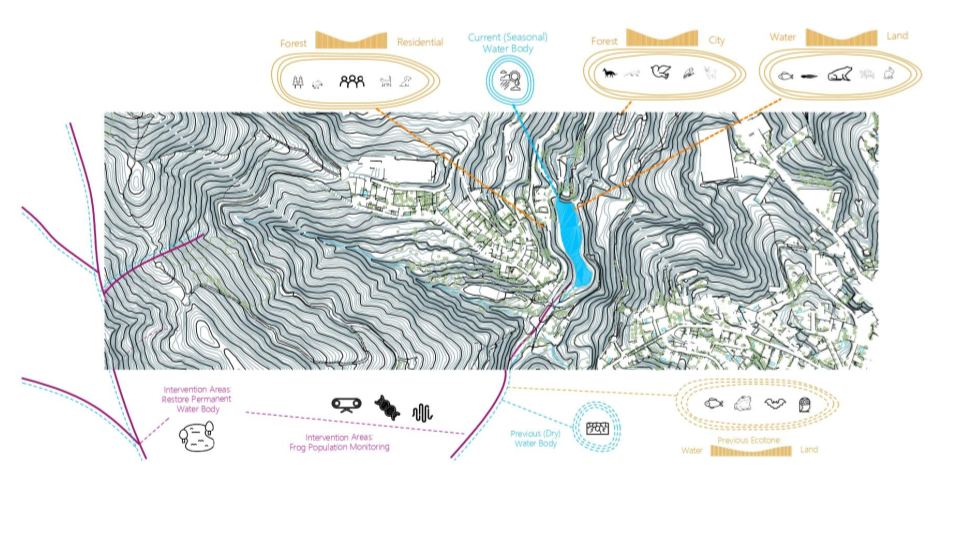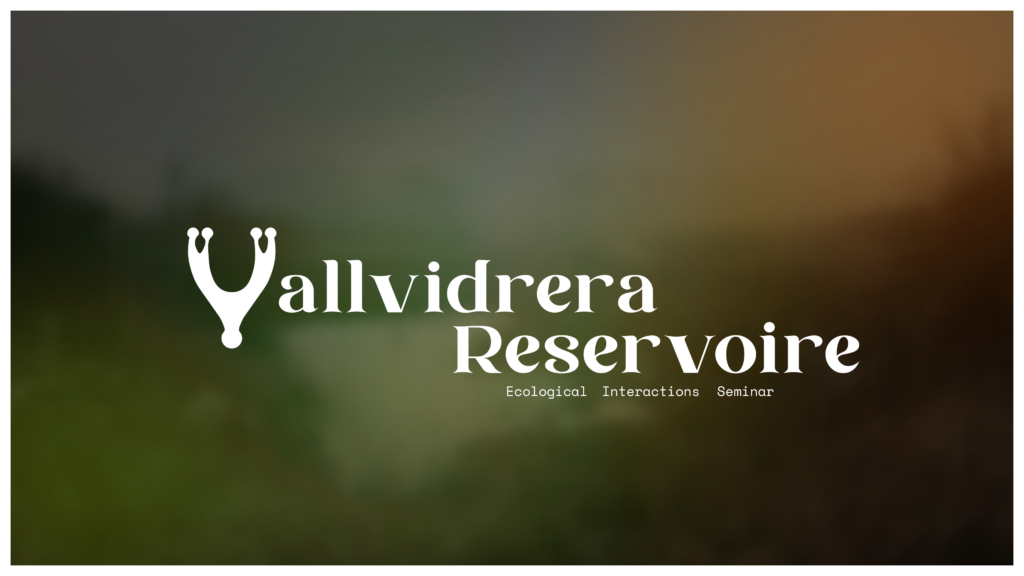
Context
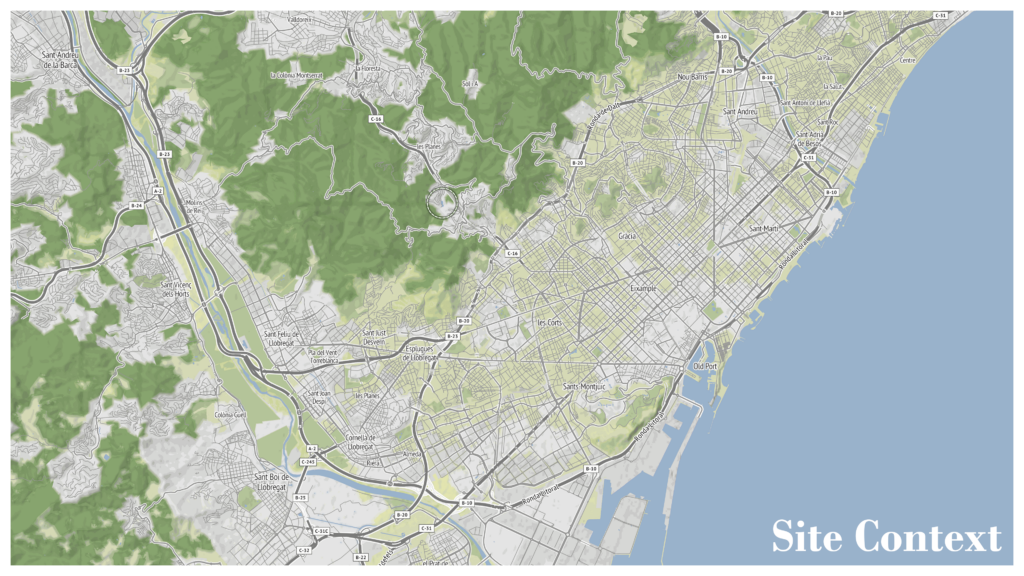
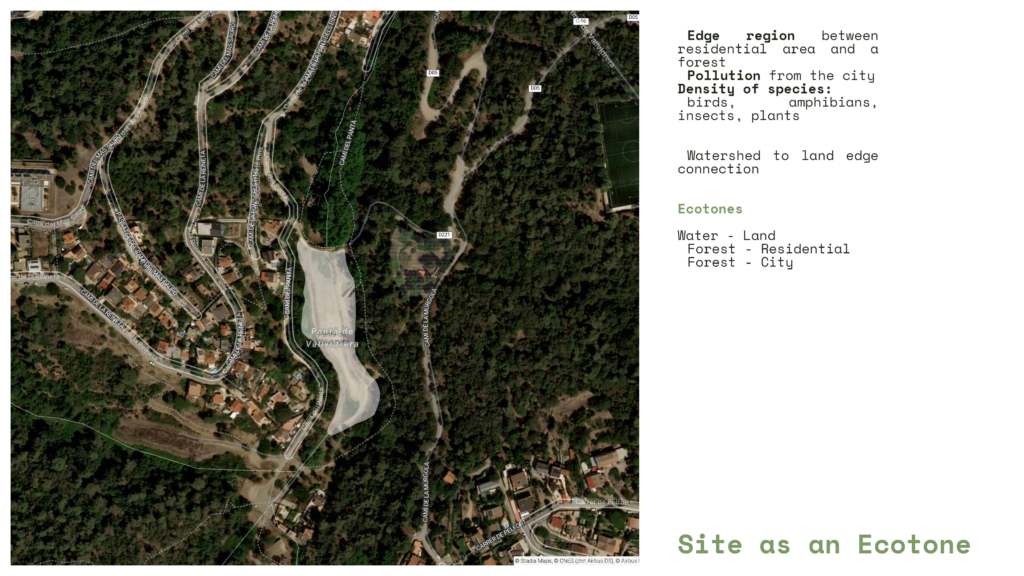
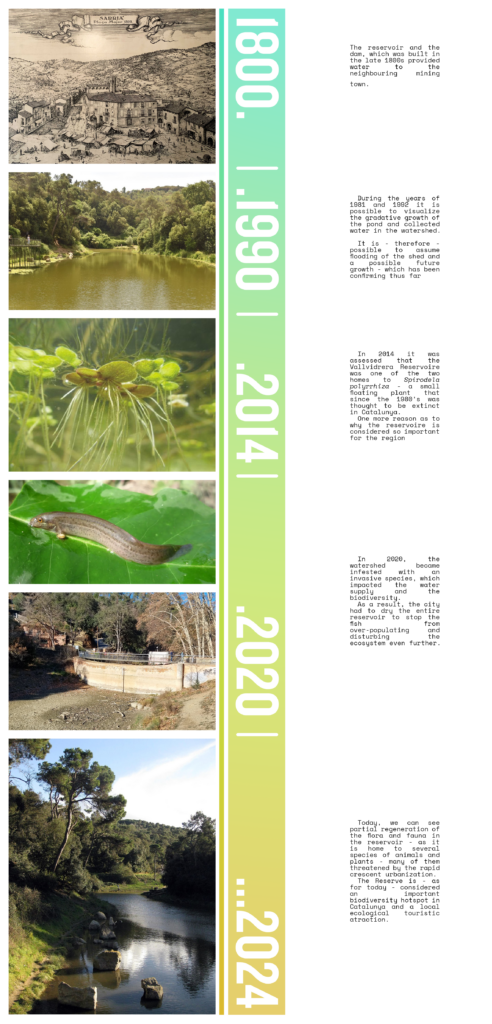
Frogs as An Indicative Species:
The Pelophylax Perezi frogs, native to the reservoir are an indicator of the ecosystem’s biodiversity, and require a permanent body of water to thrive. These amphibians traverse through ecotones and patches, evidently providing us an indication of a diverse ecosystem.
Why Frogs?
- As amphibians traversing water and land, deterioration to either environment would reflect on their health. Their transition between living in water to living on land is a complex process, and “chemical pollutants can act as hormones, interfering with this metamorphosis and possibly causing deformities” 1
- Due to their permeable skin, which they use to drink water, toxicity in the ecosystem would reflects directly to their health.
- Frogs and toads rely on wetlands for breeding. Droughts can disrupt their life cycle, potentially leading to unsuccessful breeding and population decline if dry spells become more frequent.
Analysis
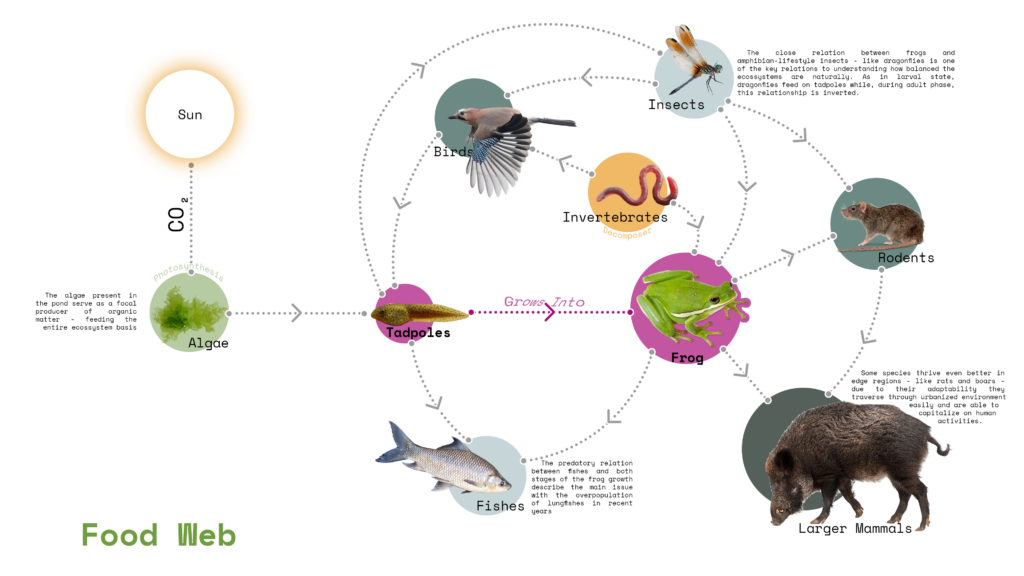
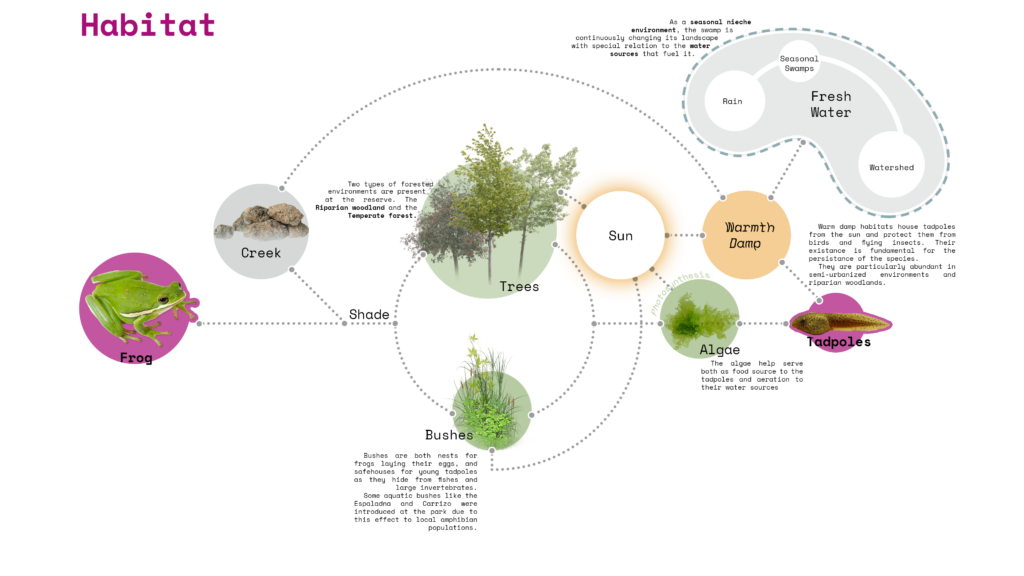
Methodology
Could we use the behaviours and population size and movements of frogs to draw conclusions about the change in surface water in the Collserola, instead of using methods such as satellite imagery? Or to complement such methods?
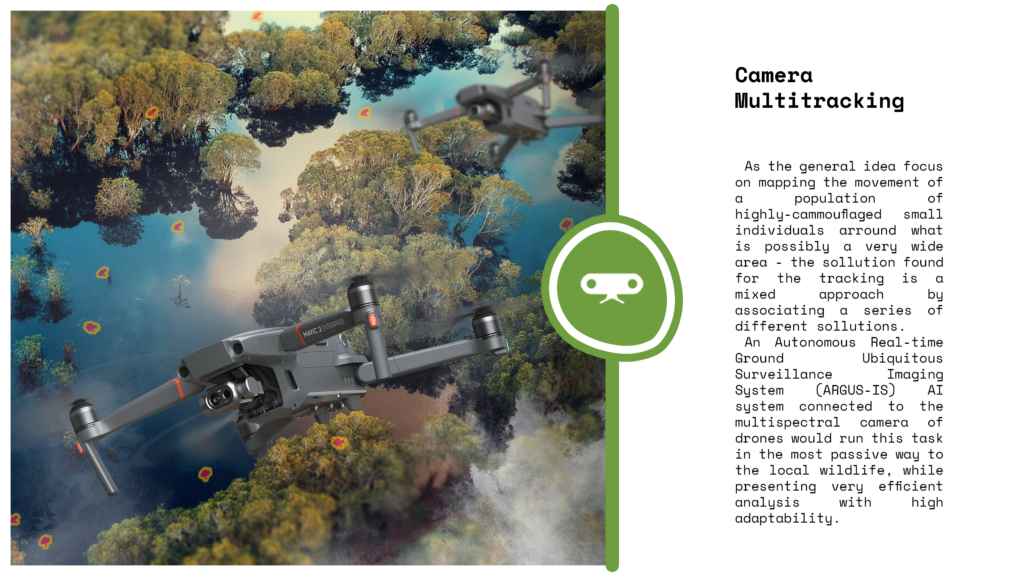
By pairing the Non-continuous Multitracking data with climatical and biological big data analytics in a crossed model for understanding the entire ecossystem and the phonomena that happen to it. Simillar applications have been proven to work in diverse scenarios and the compound analysis generate a local-global simultaneous system – Highly constructive and expansible.
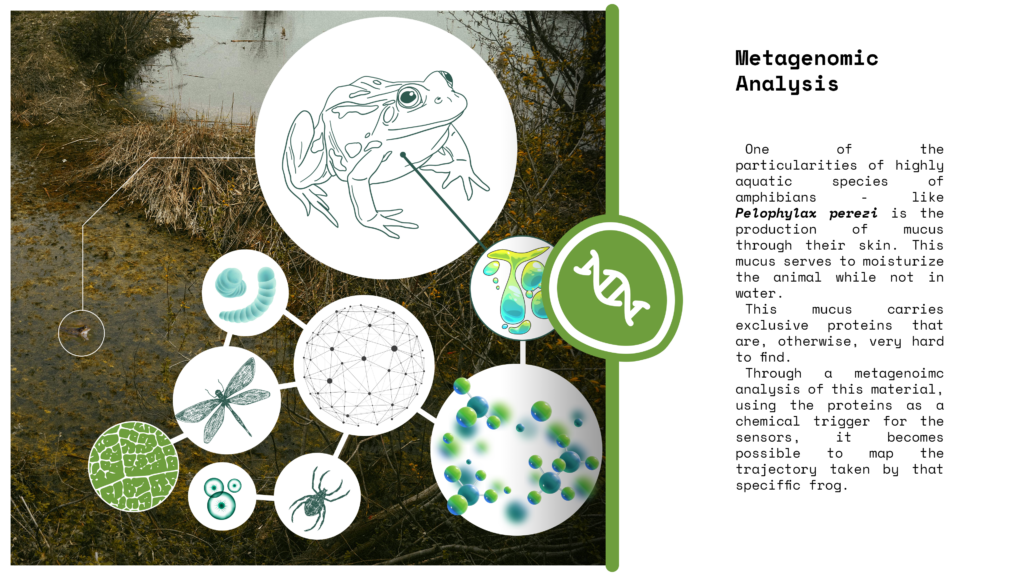
The metagenomic analysis goes smaller on the scale and approaches the individual critters that traverse the woodlands. As a highly biodiverse space – The placement of tactive sensors are a problem when the necessity is to track a speciffic species. The protein-reactive system matches that gap by capitalizing on the exclusivities of the species – both for the sensor, as for the recieved data. That data is – finally – fundamental for tracking the movements of a population in-between focal points.
This is also a way of interacting with the subject species in a way that it is not intrusive nor damaging to the animals and their enviroment.

The sound monitoring system has already been applied for simmilar uses arround the world. The necessity of filtering the species is derived from reducing possible intereferences to both the prior systems – as many species live arround the same area and it might be difficult – even for a good CV model to address with precision what species an individual is without further examination. The sounds, on the other hand, are produced by the frogs constantly and may vary widely – offering the exact type of specificity required.
Implementation
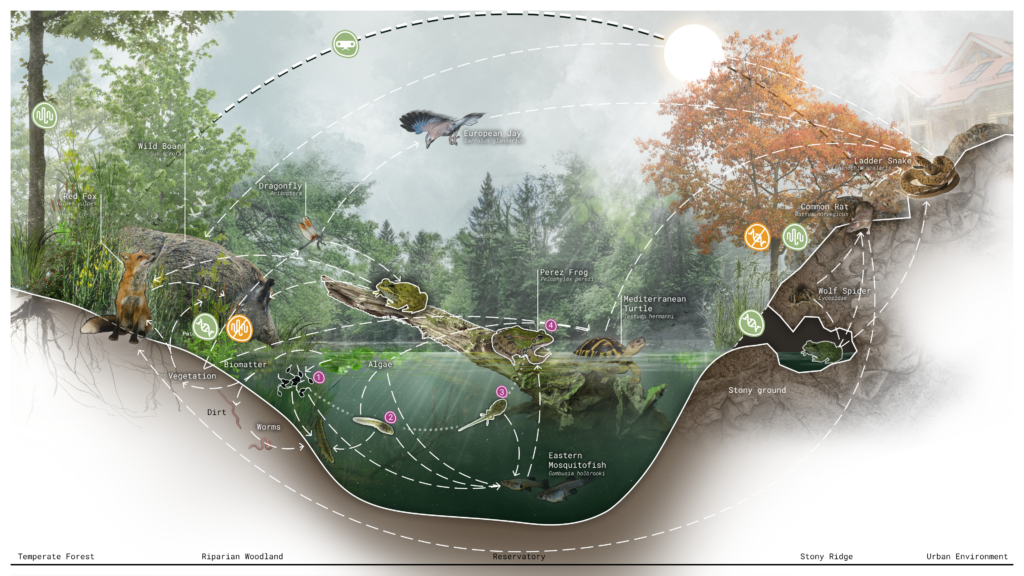
The schematic section above offers some information on the type of relation existing among the creatures of the Reserve, as well as for some of the ecogeographies one might find once wondering arround it.
The growth stages of the frog are represented to the centre and their relation to other animals might vary during their life.
Finally, the scheme also presents information as to where and how, sistematically, the analysis systems should be installed and employed in order to improve their efficiency.
